
Every year, the Rachel Carson Trails Conservancy puts on the Rachel Carson Challenge ("The Challenge), ~34 mile hike from Harrison Hills Park to North Park, along whatever trail the conservancy has been able to stitch together with a myriad of agreements with private landowners, from Sunrise to Sunset on the Saturday closest to the Summer Solstice. In a world that is used to thinking in terms of digital precision, there is something gratifying about an event whose time and dimensions are based on physical reality instead of arbitrary human will. But there is nothing comforting about The Challenge itself. In fact it is brutal. By the time you are done you feel someone massaged your legs with a baseball bat. And it is deep pain, deep into the muscles of the thighs and calves.
Quote:
Mary Reed in her article at getoutzine.com says from her experience in the challenge last year
I ask my fellow participants why they are doing this. The answers fall into three general categories: for the challenge; because I’m crazy and/or stupid; I was drunk when I signed up.I got to the North Hills parking area where I was ushered in by Mark, whom I know as a Red Cross volunteer. I made my way to the start with two people who I met on one of the training hikes. One of them was dressed in colonial era dress, reflecting this year's theme of General Forbes march across Pennsylvania, along with Pittsburgh's 250th anniversary.
Quote:
When we told some Revoluntionary reenactors what we were doing (34 miles, one day), they said that if a horse did that we would have to put it down.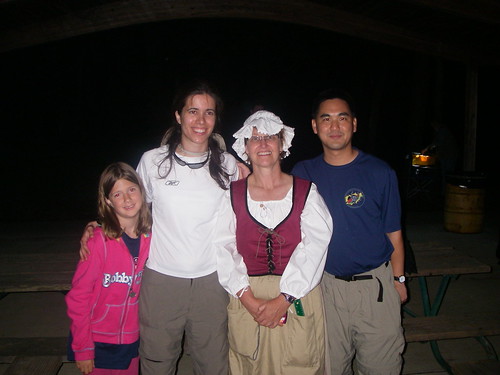
We got to the start area and waited for sunrise. I met Steve there, setting up the tag scanning and radio. He remembered me from a computer donation a year ago.
My friends arrived soon after, and we waited for the beginning of the challenge along with the gathering crowd.
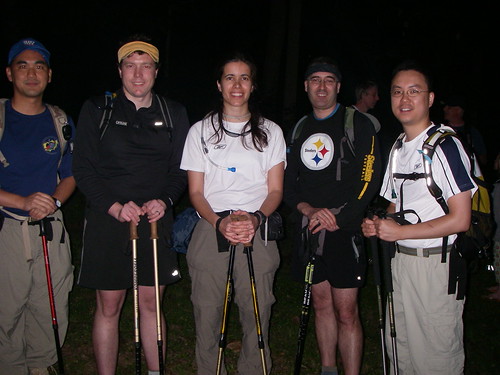
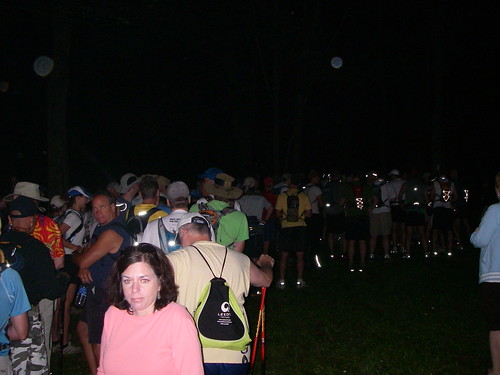
Quote:
M to me: "Oh, then you are normal"
T: "No, his fiancee would describe him as anything but normal"
The challenge itself began with the sunrise, with the moon still lit. In Harrison Hills park we were soon greeted by mist over a pond.
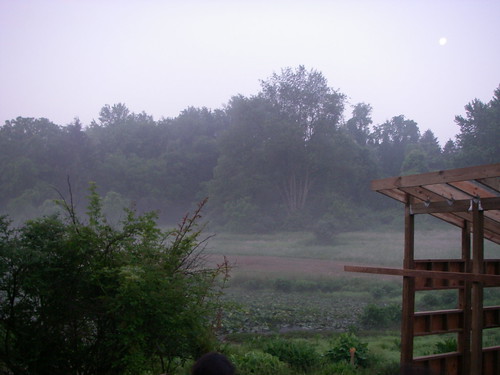
And so it was, 34 miles of trails, some roads, fields of wildflowers to cross,
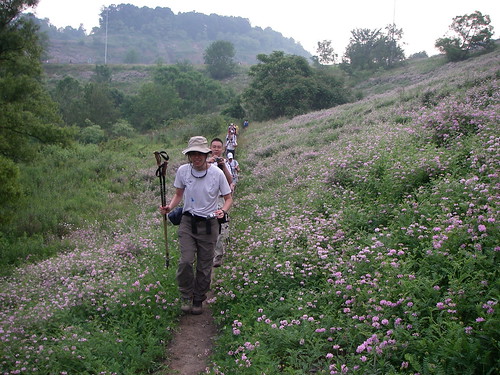
utility lines to follow,

hills to descend,
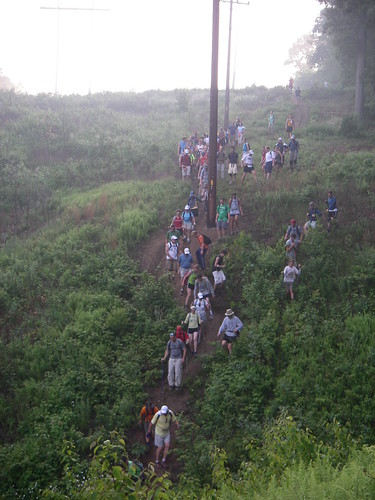
which always seemed to be followed by hills to climb.

And along the way were the checkpoints, where volunteers checked us in, fed us, and encouraged us.
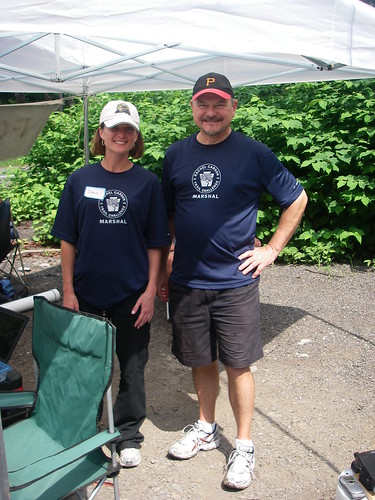
This year, also in keeping with the Pittsburgh 250th, the checkpoints also had names, after colonial era forts, like Fort Bedford.
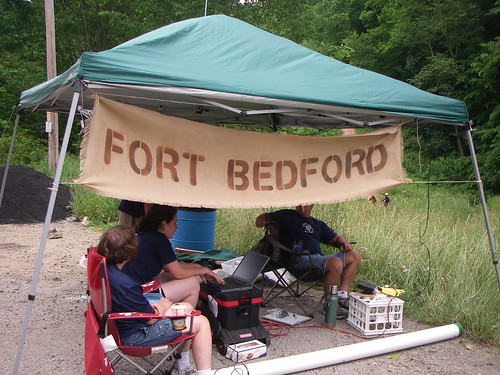
Along the way we had many random conversations. Encouraging other hikers, joking around with how crazy this was. Untangling just who recruited or hoodwinked, whom to do The Challenge. And giving aid, carrying packs of people who just could not get further and needed to get somewhere to be picked up. Wrapping knees or treating blisters. Giving directions and advice. Encouraging people to push further, letting those who could not go further know just how well they did. And talking about life, of service in Iraq and Afghanistan, a WWII vet who gave out water, the neighbor on the trail who gave out water, talking about married life and kids (letting a soon-to-be-married type some hints on what is to come).
I'm a believer that when I go hiking, I am usually doing something else as well, be it photography, birding, cooking and eating, or socializing. Of course, The Challenge is big enough that it can certainly be its own reason. But I used this as a test to my ability to carry radio equipment to last through the day. The Challenge has ham radio support at all the checkpoints and accompanying key volunteer staff throughout the day, some of whom are recruited off of the Allegheny County Public Service Net/ARES/RACES, which I am a part. So I carried a handheld radio, several batteries, and listened in throughout the day.
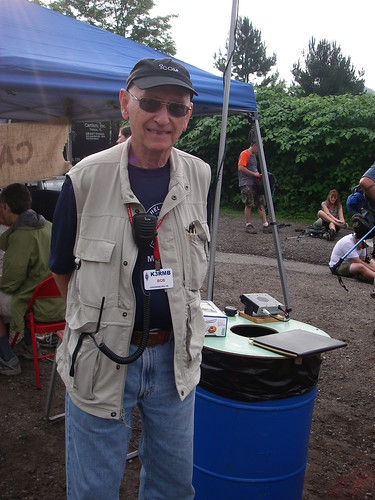
As the day went on, the many things that go on were discussed over the radio net set up for The Challenge. From setting up the checkpoints, ensuring porta-potties were at all locations, to checking on supplies of food, water and ice. All the things that those of us on events are so thankful to see when we get to the checkpoints.
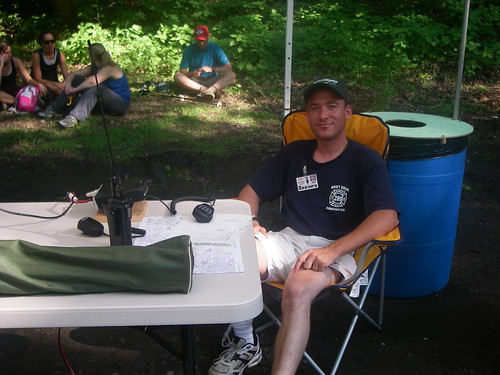
And the not so welcome messages. The tag numbers of the people dropping out. The questions about hikers not accounted for. Arranging for pickups of those who need help. And the warnings of the thunderstorm that was coming that evening.
As the miles went on and the knees were battered, I heard the warning coming of the thunderstorms for Ohio over the radio net, and that gave a sense of urgency to the last few miles. And on the trails of North Park the lightening and thunder started. My little group realized we were less than a mile from the finish, but took the better part of valor and jumped trail to the Sharon shelter to call for pickup. Not long after, we saw the sweep hikers shepherding other hikers off the trail and they brought us to the finish at Beaver shelter for food and rest for our battered legs.
Many thinks to all the volunteers, the training hike leaders (hi Bob and Donna), trail maintainers (hi Mark), everyone who manned checkpoints, logistics and management (hi Steve). And thanks to the radio support, for passing on their frequencies and letting me listen in, giving a bit of an education on the running of a net during an event. And for all the company on The Challenge. I'd welcome seeing you again on trails anywhere, anytime.
 It would be difficult to come up with a set of books that have less in common than this set of four, which is currently my Goodreads feed on Facebook.
It would be difficult to come up with a set of books that have less in common than this set of four, which is currently my Goodreads feed on Facebook.















